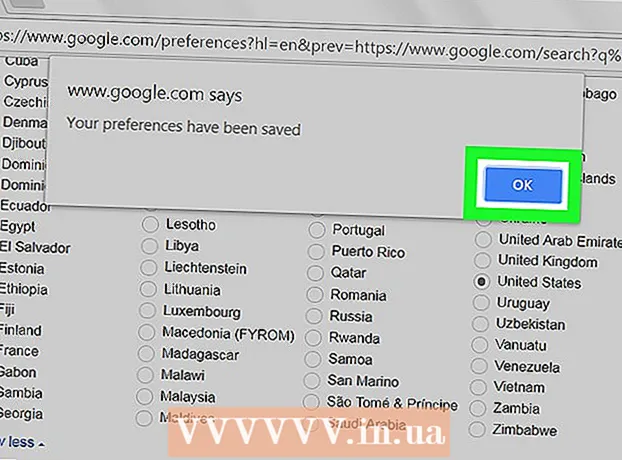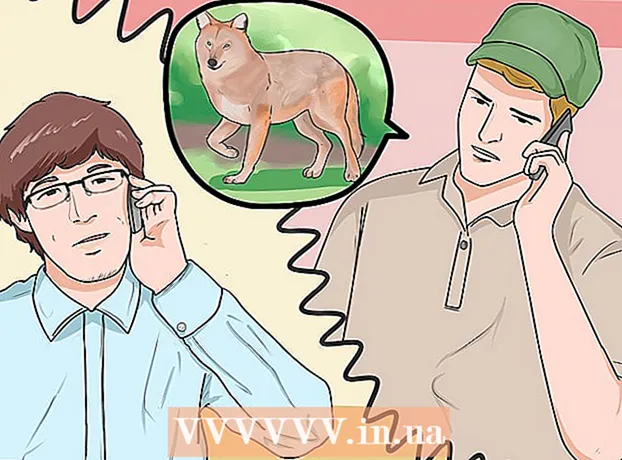Author:
Marcus Baldwin
Date Of Creation:
14 June 2021
Update Date:
1 July 2024

Content
- Steps
- Method 1 of 4: Water chemistry
- Method 2 of 4: Cleaning the Pool
- Method 3 of 4: Reducing the pool water level
- Method 4 of 4: Final stage of conservation
- Warnings
- What do you need
Proper preservation of your pool for the winter will save you time and money on maintenance. The following instructions will help you properly prepare your pool for conservation. The preparation of the pool should be started before the onset of cold weather.
Steps
Method 1 of 4: Water chemistry
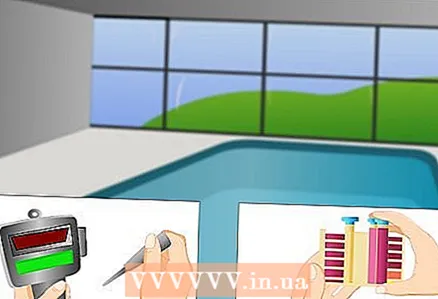 1 Before closing your pool, make sure the water is clean, clear and chemically balanced. The last point is extremely important: the correct composition of the water protects the pool from corrosion or salt deposits that can occur during winter. The chemical indicators of water should be as follows:
1 Before closing your pool, make sure the water is clean, clear and chemically balanced. The last point is extremely important: the correct composition of the water protects the pool from corrosion or salt deposits that can occur during winter. The chemical indicators of water should be as follows: - pH: 7.2-7.6
- Alkalinity: 80-120 mg / l (ppm)
- Calcium hardness: 180-220 mg / l (ppm)
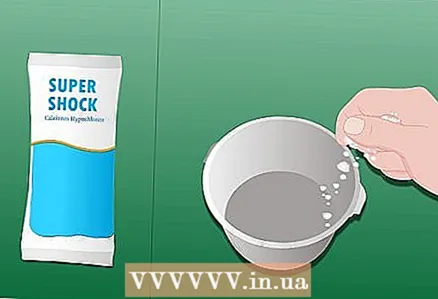 2 Chlorine the pool. The pool should be disinfected before storage. For this, sodium hypochlorite can be used, which is fed into the water when filling the pool or into the recirculation system before the filters. Follow the directions for use of the disinfectant.
2 Chlorine the pool. The pool should be disinfected before storage. For this, sodium hypochlorite can be used, which is fed into the water when filling the pool or into the recirculation system before the filters. Follow the directions for use of the disinfectant. - The disinfection of water carried out during the period of use of the pool is not enough, since gentle means are used for this. A stronger agent is needed to preserve the pool for a long time.
- Wait a few days after using a chlorine-based product to allow the chlorine concentration to drop to 1-3 mg / l (ppm).
 3 Add algicide. Before using the algaecide, make sure the chlorine content is low, which can neutralize the algaecide.
3 Add algicide. Before using the algaecide, make sure the chlorine content is low, which can neutralize the algaecide. - Algicide is used to eliminate and prevent the growth of algae that cause cloudy water and unpleasant odors.
- The higher the concentration of algicide, the longer its bactericidal effect.
Method 2 of 4: Cleaning the Pool
 1 Remove all removable pool elements, including ladders, baskets, hoses, filters, pumps.
1 Remove all removable pool elements, including ladders, baskets, hoses, filters, pumps.- Rinse all elements and leave to dry completely.
- Store all dismantled pool elements in a garage or other dry place for the winter.
 2 Clean the pool surface. A net can be used to remove fallen leaves and other floating debris.
2 Clean the pool surface. A net can be used to remove fallen leaves and other floating debris. 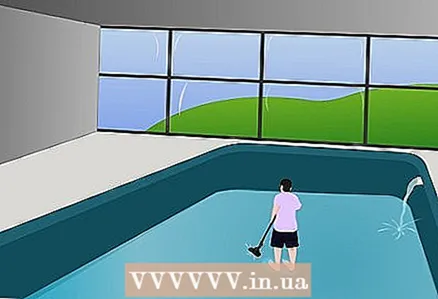 3 After removing debris from the surface of the water, clean the bottom and sides of the pool.
3 After removing debris from the surface of the water, clean the bottom and sides of the pool.- Cleaning should be carried out on the day of conservation of the pool, otherwise you will have to re-collect the newly accumulated debris.
Method 3 of 4: Reducing the pool water level
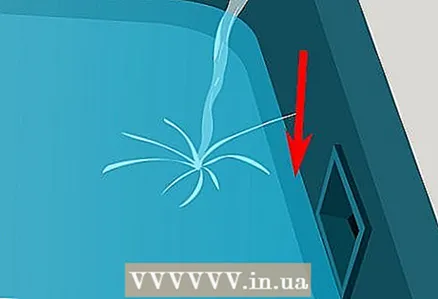 1 The remaining water level depends on the type of pool cover:
1 The remaining water level depends on the type of pool cover:- 30-35 cm below the skimmer if covered with an awning,
- 8-15 cm below the skimmer when covered with hard material.
 2 Drainage of equipment. Drain the pump, filters, heater and dispensers.
2 Drainage of equipment. Drain the pump, filters, heater and dispensers. - Remove the filters, rinse them thoroughly. Dry and store.
- If the filters are not removable, then blow them out with a vacuum cleaner.
- Ultimately, there should be no water that can freeze or become a breeding ground for microorganisms.
 3 Blow out the pool pipes with a compressor or hair dryer.
3 Blow out the pool pipes with a compressor or hair dryer.- Direct the air stream into the skimmer. The remaining water in the pipes will drain into the pool. Use pipe plugs to prevent re-entry of water.
- Antifreeze for swimming pools can be used instead of drying pipes. Follow the manufacturer's instructions.
Method 4 of 4: Final stage of conservation
 1 Cover the pool. The cover must be suitable for the size of the pool and must not leave open gaps or gaps.
1 Cover the pool. The cover must be suitable for the size of the pool and must not leave open gaps or gaps. - A tent covers the pool more tightly, but hard cover may be preferred by families with children or pets.
- If there are trees growing around the pool, you can stretch a leaf net over it.
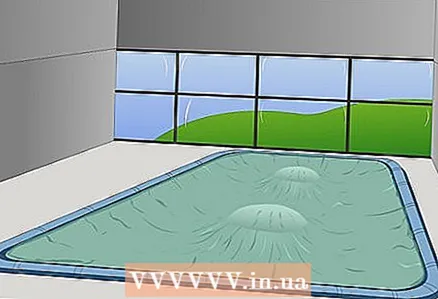 2 Air cushions are needed to prevent ice build-up in frame pools and are optional in fixed pools.
2 Air cushions are needed to prevent ice build-up in frame pools and are optional in fixed pools.- Fill the pillows with air and lower them to the center of the pool.
- The larger the pool, the more air cushions will be required.
Warnings
- Do not use automotive antifreeze to preserve the pool.
- Never drain water completely. This can ruin the pool.
- For the safety of children and pets, install a pool alarm.
What do you need
- Water Chemistry Tester
- Chemical treatment kit
- Algicide
- Sodium hypochlorite
- Filter cleaner
- Pool cover or awning
- Pool cleaning equipment
